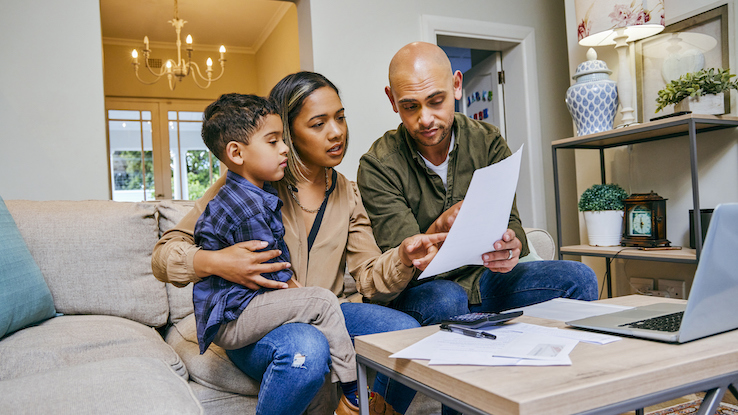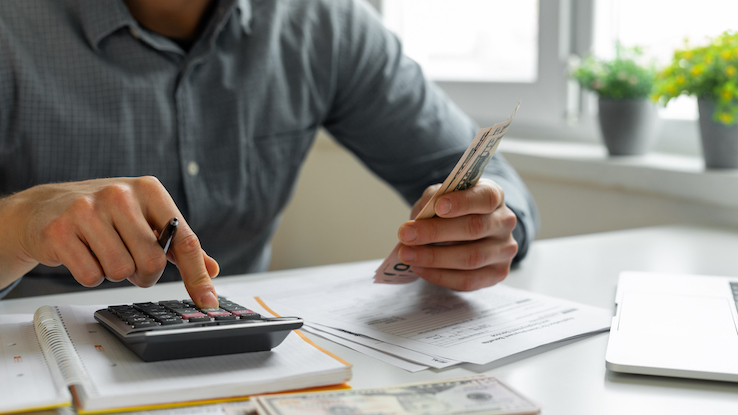
Budgeting can requires some careful planning even when you’re just focusing on covering your regular living expenses, such as your housing and food. When you also add debt management into the mix, your budgeting needs become more complex. Debt payments can be sizable, and you may need to start putting less towards other bills to make these payments.
It’s true that figuring out how you can pay off your debt faster may seem tricky, especially when you still have the same amount coming in each month — but getting on the right path is easier if you have an effective strategy in place. These simple budget tips can help you work your way out of debt with a strategy that works for your needs.
Identify Specific Unnecessary Spending Areas
A highly detailed budget does more than ensure you cover all your regular expenses; it also helps you find instances of unnecessary spending that you can create a plan to prevent. By listing out everything you pay instead of lumping certain costs into general categories, you gain a greater awareness of where your money goes. As a result, you can find opportunities to eliminate spending that isn’t essential and redirect that money toward debt payments.

Begin by recording all of your spending over two or three months. You can also review past bank statements, as long as the charges are clear enough for you to remember what you spent. Dive into the nitty-gritty of it all. When you do, you may that find recurring charges for subscriptions or services you don’t need, in addition to the total cost of “inexpensive” splurges can add up to make a difference.
Round Payments Up
In some cases, budgeting feels a bit messy because you’re not always dealing with round numbers. However, there’s nothing to say you can’t round everything up to make it all simpler.
When you’re making your debt payments, round them up to the nearest dollar (or even the nearest $5) to simplify tracking, which can also let you pay a bit more every month. While it’s a small amount, it lets you chip away at your debt faster while helping you avoid some interest charges.

You can round up every other expense category or purchase, too. Again, that simplifies the math associated with budgeting and helps you handle calculations faster. Plus, at the end of the month, you’ll likely have a small cash buffer in your account. You can take that money and put it toward your highest-interest debt or use it to bolster your emergency fund or savings.
Often, the latter option is best if you don’t have an emergency fund in place, as that gives you a cushion to protect you against the unexpected. However, if you already have a decent amount set aside, target a high-interest debt instead.
Standardize Your Monthly Payment
Revolving debts – like credit cards and lines of credit – usually have fluctuating minimum payments. Typically, they’re based on the interest generated each month and a particular percentage of your total debt. Because they’re based on your current balances, your minimum payments can change over time.

If you’re focused on paying down a revolving debt (and won’t be adding new charges to it), use the current monthly payment in your budget. Then, even if this minimum payment falls as you pay down the debt, continue to pay the higher amount. It’ll let you tackle your principal faster, allowing you to ditch the debt quicker and reduce the interest you’ll pay. Plus, it standardizes the expense in your budget, which simplifies your tracking.
Assign Expenses to Your Pay Days
When you create a budget, don’t just outline your expenses. Instead, assign them to your paydays. Then, once your paycheck arrives, you can pay the associated debts right away, either manually or by ensuring any automatic payments line up with the corresponding date.
For example, late fees on an account can add up surprisingly fast, adding to your debt or increasing your next monthly payment. In many cases, a penalty APR can rise well into the double digits. For credit cards, a 29.99% APR isn’t uncommon. When you’re trying to pay off debt, a rate that high can hold you back. By associating every expense with a payday and sending the payments right when you’re paid, you eliminate the likelihood that you’ll be charged those penalties.
Embrace Zero-Based Budgeting
With zero-based budgeting, every penny of your income gets allocated to a particular category every month. Essentially, you give all of your income a purpose, and at the end of the month, you shouldn’t have any of that month’s income left — or at least uncategorized.

Those income purposes can vary. Along with allocating money for expenses, you can designate some for savings. If there’s any left over, you want to give it a purpose. If you’re navigating debt, then paying down the principal on your highest-interest debt is a good option.
Essentially, by deciding that your remaining income will go towards your debt, you’re budgeting your way to lower balances. However, you’re also covering all of your core needs first, including setting cash aside in savings. That makes this an excellent option for practically everyone.
Direct Paid-Off Debt Payments to Another Debt
When you pay off a debt, don’t start spending that money on non-necessities. Instead, adjust the monthly payment you send to your highest-interest debt, adding the previous debt amount to your payment for the remaining obligation.

By redirecting the paid-off debt’s payment to another debt, you’ll tackle the next balance faster. Plus, by focusing on the highest-interest debt, you’ll reduce the total amount of interest you have to pay. Use this process every time you pay off a debt, and you could conquer everything faster than you’d expect.
Go Cash-Only When Shopping
While using a credit or debit card is convenient, these tools open the door to unnecessary spending. Often, cards don’t have the same psychological impact as using cash, making you more likely to overspend. Additionally, it’s easy to lose track of what you have in your account while you’re out and about.

If you go cash-only for groceries, gas and similar everyday needs, you may automatically be more cautious with your spending. Watching the amount of available money shrink in your wallet makes an impression. As a result, you may think twice about a purchase, which can limit the odds of budget-derailing splurges.
By following these tips, you’ll find it much easier to get out of debt.





